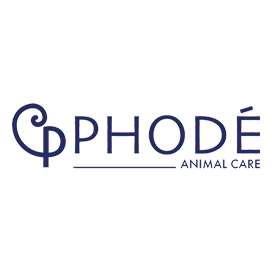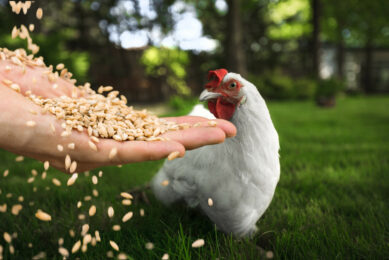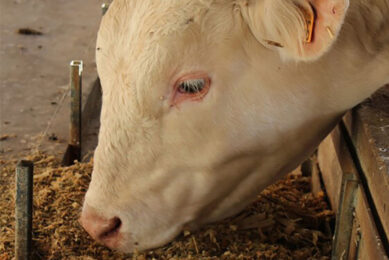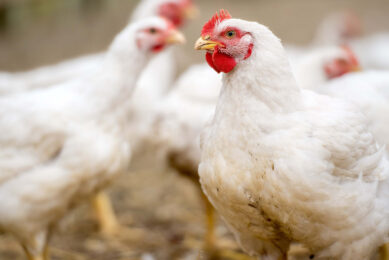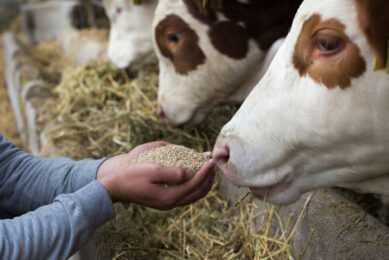A helping hand for sustainable dairy farming
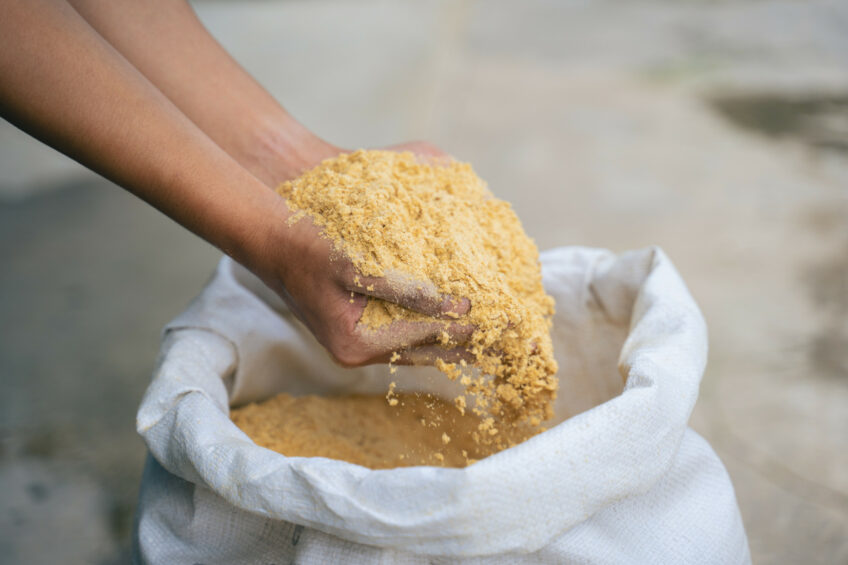
To be more sustainable and save on feed costs, we can reduce dietary protein intake slightly in a cow’s ration. A supplement based on plant extracts has been confirmed to be an excellent tool to reduce protein in the diet and boost production parameters.
With approximately 12 million dairy farms across Europe and a production value exceeding €45 billion annually, the sector plays a vital role in rural economies, food security, and cultural traditions. However, as environmental concerns intensify globally, the dairy industry faces mounting pressure to reconcile productivity with sustainability.
Dairy sector in Europe
The environmental footprint of dairy production encompasses several critical areas like greenhouse gas emissions, water usage and its quality, land use and biodiversity.
The EU has implemented several policy instruments to drive sustainability:
- The Farm to Fork Strategy under the European Green Deal
- The Common Agricultural Policy (CAP) with its new ‘eco-schemes’
- Carbon farming initiatives that reward emissions reduction and carbon sequestration
- Nitrates Directive and other water quality regulations.
European dairy stakeholders have responded to these challenges with various approaches to improve sustainability. Among those, precision feeding techniques that reduce waste and emissions can be set up.
Protein source: the case of soybean meal
It is well known that lowering dietary protein offers a range of environmental benefits. Less protein means:
- Reduced nitrogen (N) input
- Lower nitrogen losses in manure and urine
Moreover, reducing dietary protein in the cow’s ration reduces feed (protein) costs and can increase the profitability of the farm, as long as animal performance is maintained or improved.
The EU imports approximately 30-35 million tonnes of soybeans and soybean meal annually, much of which goes into animal feed, including dairy. The environmental cost of soybean meal in cows’ diets is significant. Soybean cultivation is a major driver of deforestation, particularly in South America (Brazil, Argentina, Paraguay). Converting forests or grasslands to soybean monocultures reduces biodiversity and eliminates carbon sinks. When land use change emissions are included, soybean meal can have a carbon footprint of 5-8 kg CO2-equivalent per kg.
In addition, the demand of soya grown on existing agricultural land or certified sustainable sources outstrips supply. Thus, alternative approaches are required to lower the environmental impact of dairy production.
Naturally boosting the production of protein from rumen microbes
Rumen microbial protein contributes about 50-75% of the cow’s total protein supply and is considered to be the highest quality protein available to the cow because of its amino acid profile. Optimising the rumen environment to let rumen microbes thrive is therefore the cheapest and most efficient way to boost microbial protein synthesis and increase the amount of metabolisable protein available in the small intestine.
This can be done naturally using a blend of essential oils and spices, which modulate the activity of the ruminal microbiota and improves the (dietary) protein utilisation and synthesis.
Trials showed that essential oils (EO, Phodé) can increase the bacterial protein synthesis (g N/kg OM) by 25%, hence duodenal microbial protein (N) flow (g/day) by 19% (Table 1).
A trial in the US looked at the efficacy of EO in low-protein diets (low inclusion of soybean meal) to reduce nitrogen excretion in urine and manure. The EO supplement was mixed with one-third of the low-protein ration and top dressed (2 grammes per cow per day) and compared to a control diet with higher crude protein level (higher soybean meal inclusion). The results on N excretion and feed efficiency are in favour of EO + low-protein diet.
More recently, ingredients of the diets and their proportion were considered to estimate the effects of this nutritional strategy on the environment thanks to life cycle assessments (LCA) according to PEF CR Feed method (Table 2). The LCA revealed a lower carbon footprint by 7.9% of the diet with a low-inclusion of soybean meal. This represents 54.4 t of CO2-eq saved per year for a 100-cow farm, equivalent to more than 30 round-trip flights between Paris and New York.
A helping hand in the fight against global warming
On many farms, there is an opportunity to lower dietary crude protein with minimal risk of lowering milk production thanks to the inclusion of an EO supplement. With a healthy rumen and active microbial protein production, a reduction in dietary protein with 1 point can be done. This is not only a financially attractive option, it also reduces associated environmental issues.
As shown in different trials, adding a few grammes of a powerful blend of essential oils and spices in a cow’s diet can do this effectively. A couple of grammes can make all the difference!


